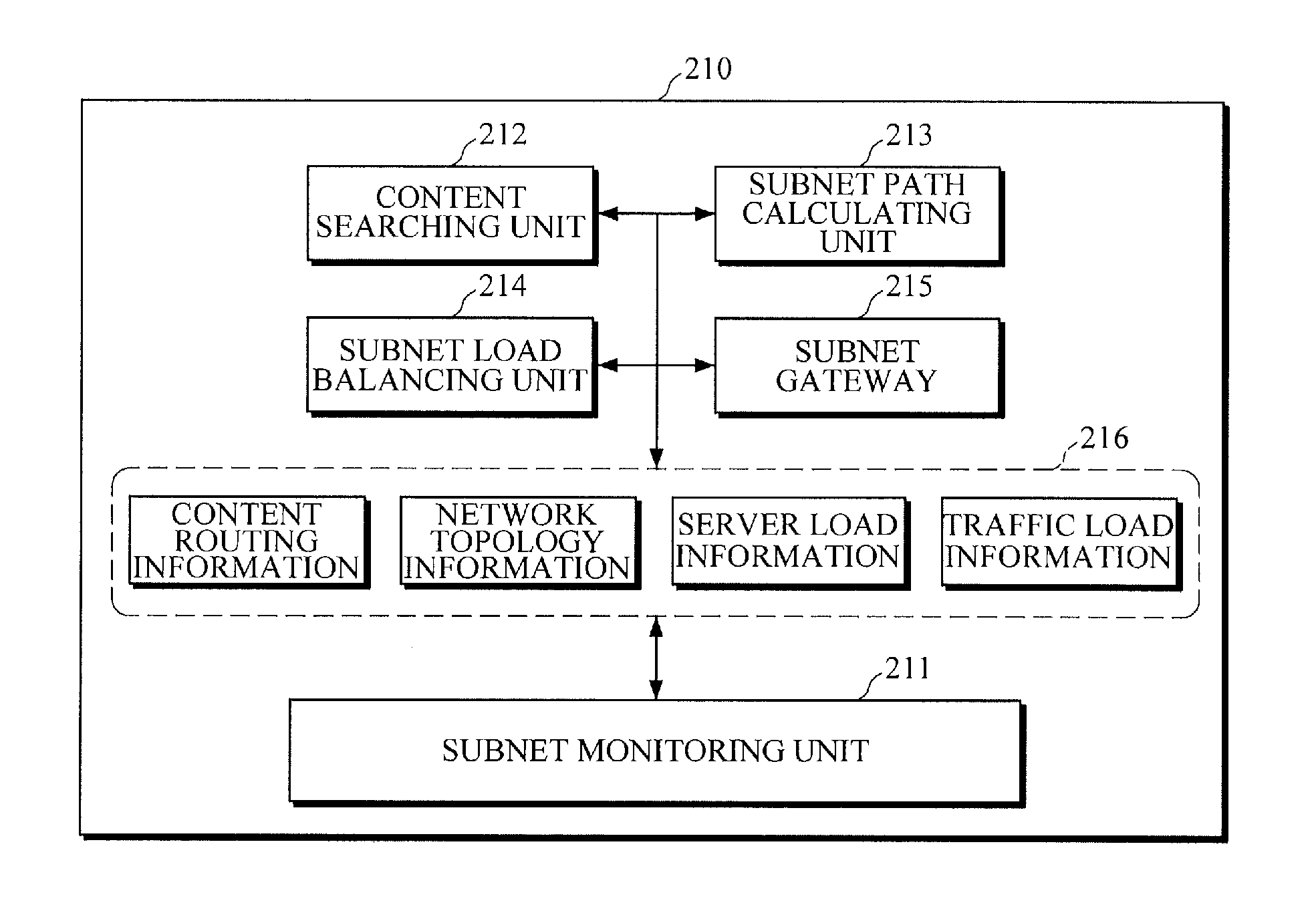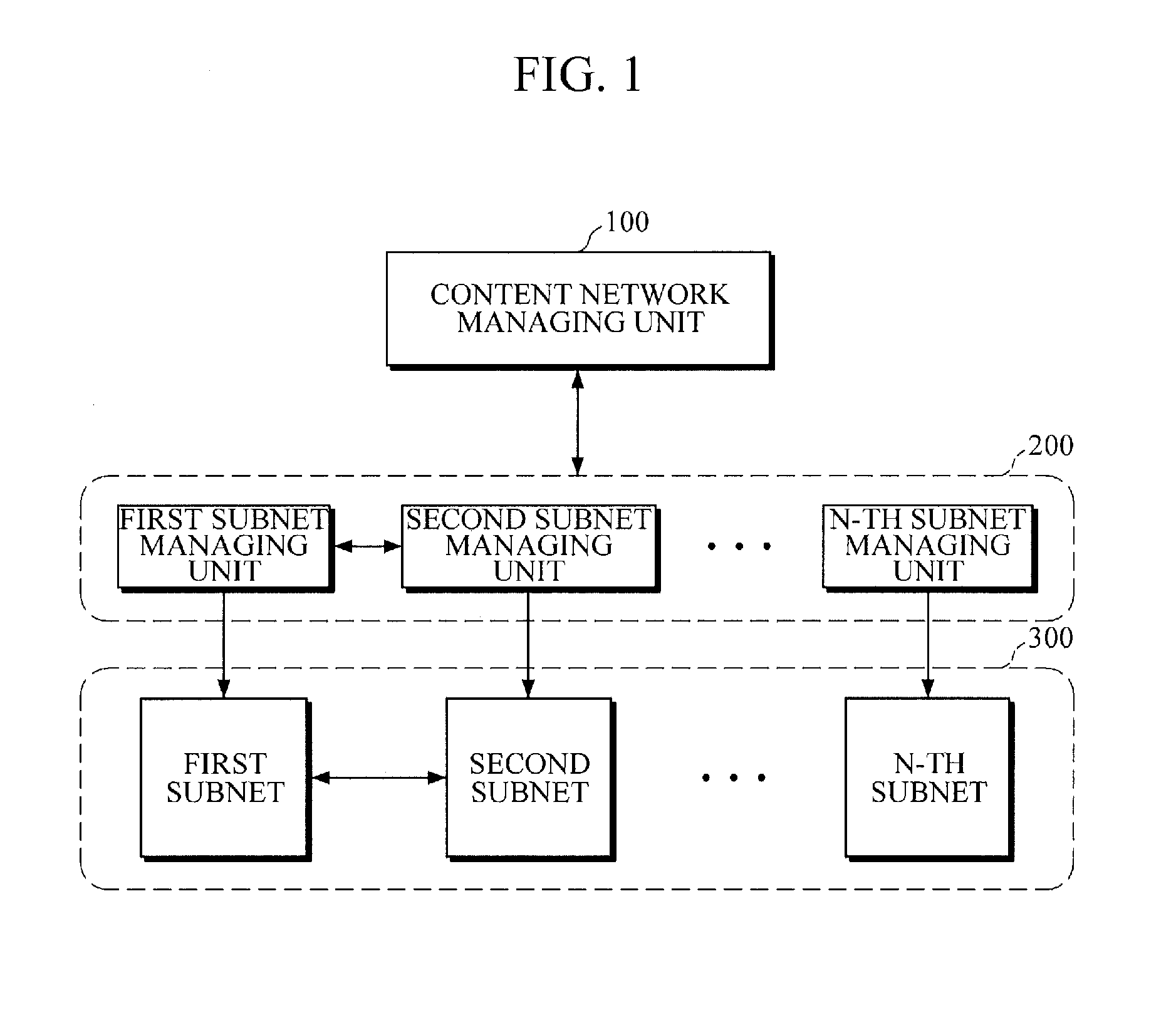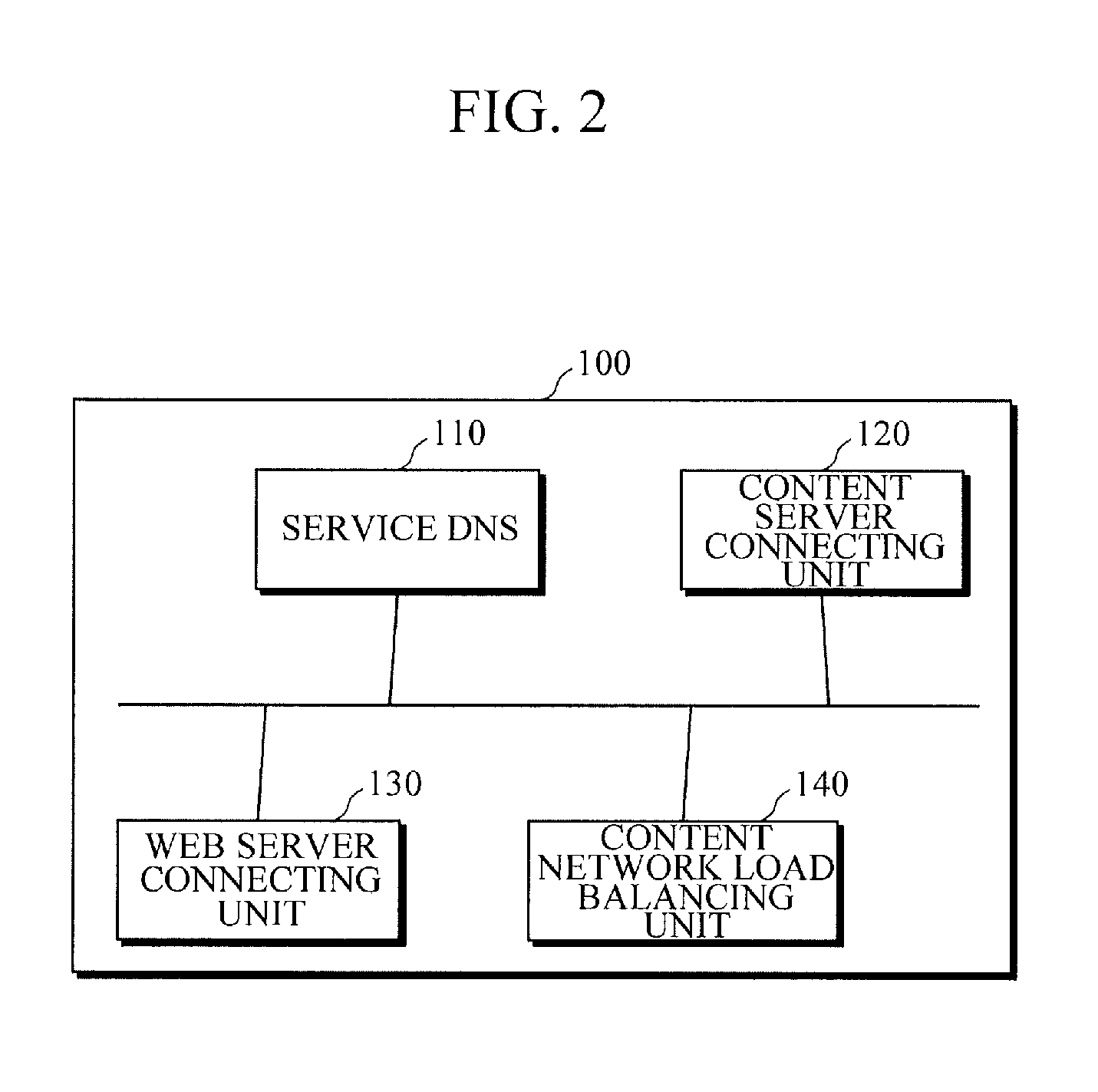Method and apparatus for load balancing of content-centric network
a content-centric network and load balancing technology, applied in the field of load balancing of the network for delivering content, can solve the problems of increasing the demand for video content services with high definition and mass storage, increasing the traffic of the network, and increasing the demand for network traffi
- Summary
- Abstract
- Description
- Claims
- Application Information
AI Technical Summary
Benefits of technology
Problems solved by technology
Method used
Image
Examples
Embodiment Construction
[0026]The following description is delivered to assist the reader in gaining a comprehensive understanding of the methods, apparatuses, and / or systems described herein. Accordingly, various changes, modifications, and equivalents of the methods, apparatuses, and / or systems described herein will be understood by those of ordinary skill in the art. Also, descriptions of well-known functions and constructions may be omitted for increased clarity and conciseness.
[0027]FIG. 1 is a diagram illustrating a configuration of an apparatus for load balancing of a content-centric network according to an exemplary embodiment of the present invention.
[0028]Referring to FIG. 1, the apparatus for load balancing of a content-centric network according to an exemplary embodiment of the present invention includes a network managing unit 100 and two or more subnet managing units 200. The network managing unit 100 divides a network into two or more subnets 300 according to areas or service providers. The ...
PUM
 Login to View More
Login to View More Abstract
Description
Claims
Application Information
 Login to View More
Login to View More - R&D
- Intellectual Property
- Life Sciences
- Materials
- Tech Scout
- Unparalleled Data Quality
- Higher Quality Content
- 60% Fewer Hallucinations
Browse by: Latest US Patents, China's latest patents, Technical Efficacy Thesaurus, Application Domain, Technology Topic, Popular Technical Reports.
© 2025 PatSnap. All rights reserved.Legal|Privacy policy|Modern Slavery Act Transparency Statement|Sitemap|About US| Contact US: help@patsnap.com



